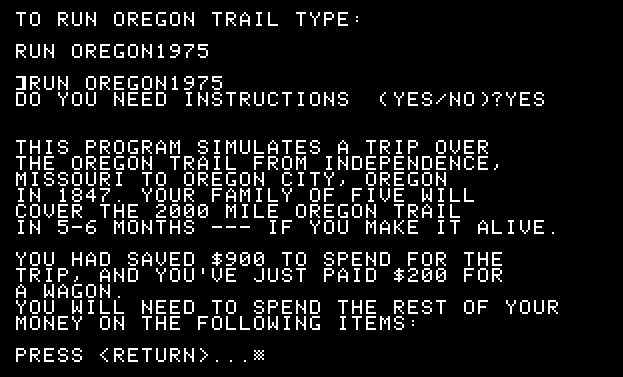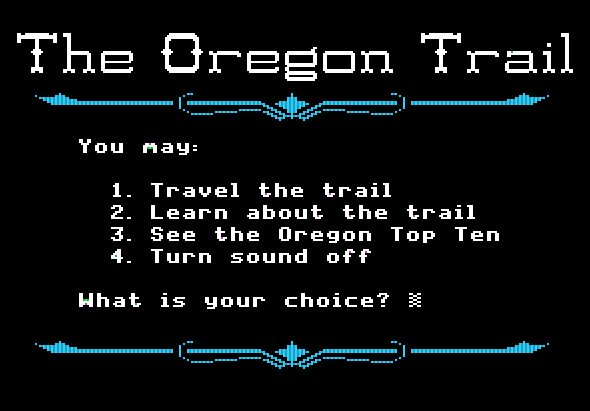By Heath R.
The Oregon Trail was developed in 1971 by three student teachers in an attempt to enliven the curriculum for an 8th-grade history class that one of them was teaching. Don Rawitsch originally conceived of a board game with dice rolls and little wagon figurines that would simulate the experiences of 1800s pioneers. When he told his two roommates, both fresh out of college computer science courses, about his lesson plan, they immediately identified it as a perfect application for a computer program. The two roommates, Bill Heinemann and Paul Dillenberger, spent the next two weeks translating Rawitsch’s idea into computer code. Written in BASIC on an
HP 2100 minicomputer and controlled via a clunky text-only teletype interface, the game was an instant success with Rawitsch’s 8th graders. At the end of the semester he deleted the game from the school’s shared computer but kept a print-out of the original BASIC source.
A few years later Rawitsch went to work for the
Minnesota Educational Computer Consortium.
MECC, as it would be known to millions of students worldwide, was chartered by the Minnesota legislature to provide computing resources to schools and universities throughout the state. By the late ‘70s MECC was running the largest educational timesharing system in the world (MTS). Students from all over Minnesota could connect to MTS and program in BASIC or other popular languages of the day. Or they could run pre-written programs from MECC’s library of hundreds of titles. One of the most popular of these programs, by far, was Don Rawitsch’s original creation, then known only as
OREGON.
OREGON on the Xerox Sigma 9 Mainframe
After signing on with MECC, Rawitsch laboriously typed in his BASIC source code for OREGON to upload it to MECC’s new time-sharing network. The version available to students in Minnesota in the late 70s ran on a
Control Data Corporation Cyber 73. This is the version that we at Living Computers have adapted to run on our
Xerox Sigma 9 and its
CP-V operating system.

Despite the primitive text-only interface, the fundamental elements of
The Oregon Trail are already in place in this version: you purchase supplies, hunt for food, stop at forts along the way, and try to avoid dying of dysentery or drowning in a river. Log into our Xerox Sigma 9 and give OREGON a whirl! Instructions to get you started can be found
here.
Once you are connected to our Sigma 9 via your terminal program of choice, login in using our provided guest credentials: “LCM GUEST SIGMA9” (it will not “echo” on the screen as you type this), then load the BASIC environment by typing “BASIC” and load OREGON by typing, you guessed it, “OREGON”. Type “RUN” and press return and you’re off to the races playing this historic game on actual restored vintage hardware! How cool is that!
THE OREGON TRAIL on the Apple ][e
Perhaps the most widely-played version of the game was called
The Oregon Trail and came out for the
Apple ][e in 1985. For millions of kids growing up in the 80s this was their first exposure to computer games.
The Oregon Trail retains all the familiar gameplay elements of OREGON while adding snazzy green-on-black graphics as well as music, taking advantage of the Apple ][e’s early multimedia capabilities.

Come to Living Computers and play
The Oregon Trail on our restored Apple ][e, or play it online
here.
THE OREGON TRAIL on the Apple Macintosh SE
The Oregon Trail was so successful for MECC that by the 90s you could play it on nearly every computer platform in existence. In 1992 MECC debuted an even more graphical version for the
Apple Macintosh SE. Now you could travel the trail with your mouse for the first time! These games were so popular that by the mid-90s, The Oregon Trail accounted for roughly one-third of MECC’s $30 million in annual sales! In the early days of home computing, there simply was no game more widely-played than The Oregon Trail.
Play this version on LCM’s Macintosh SE, or play online through Archive.org
here.